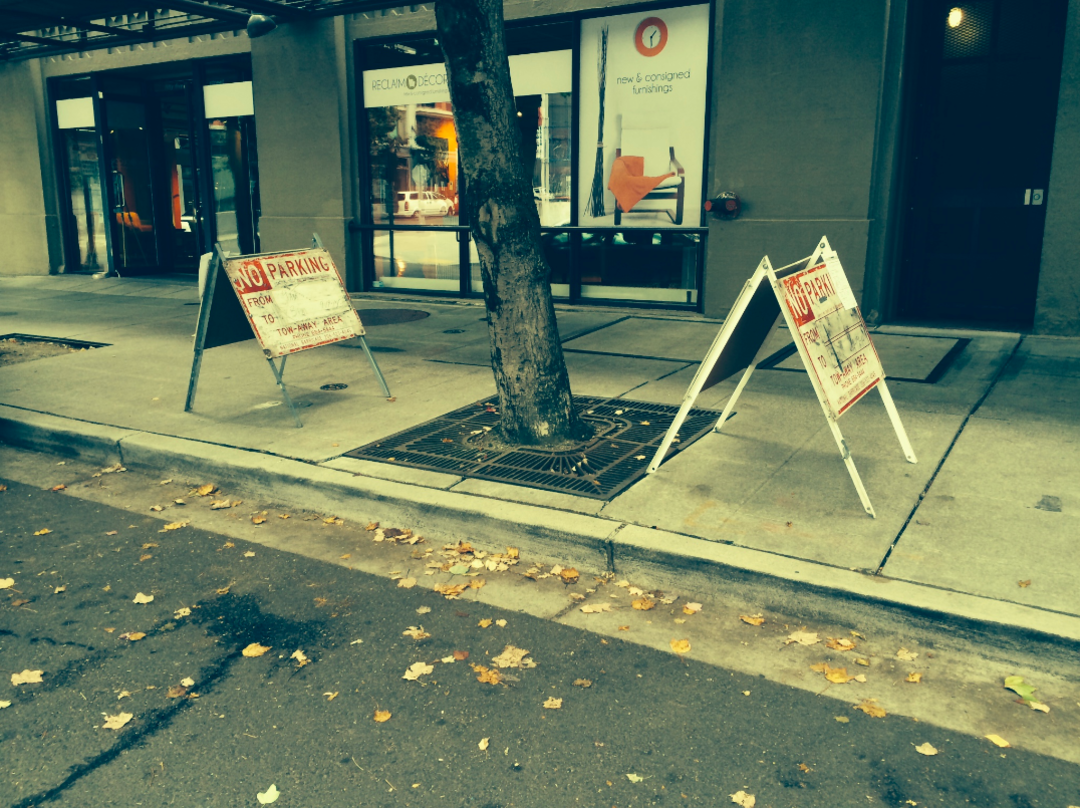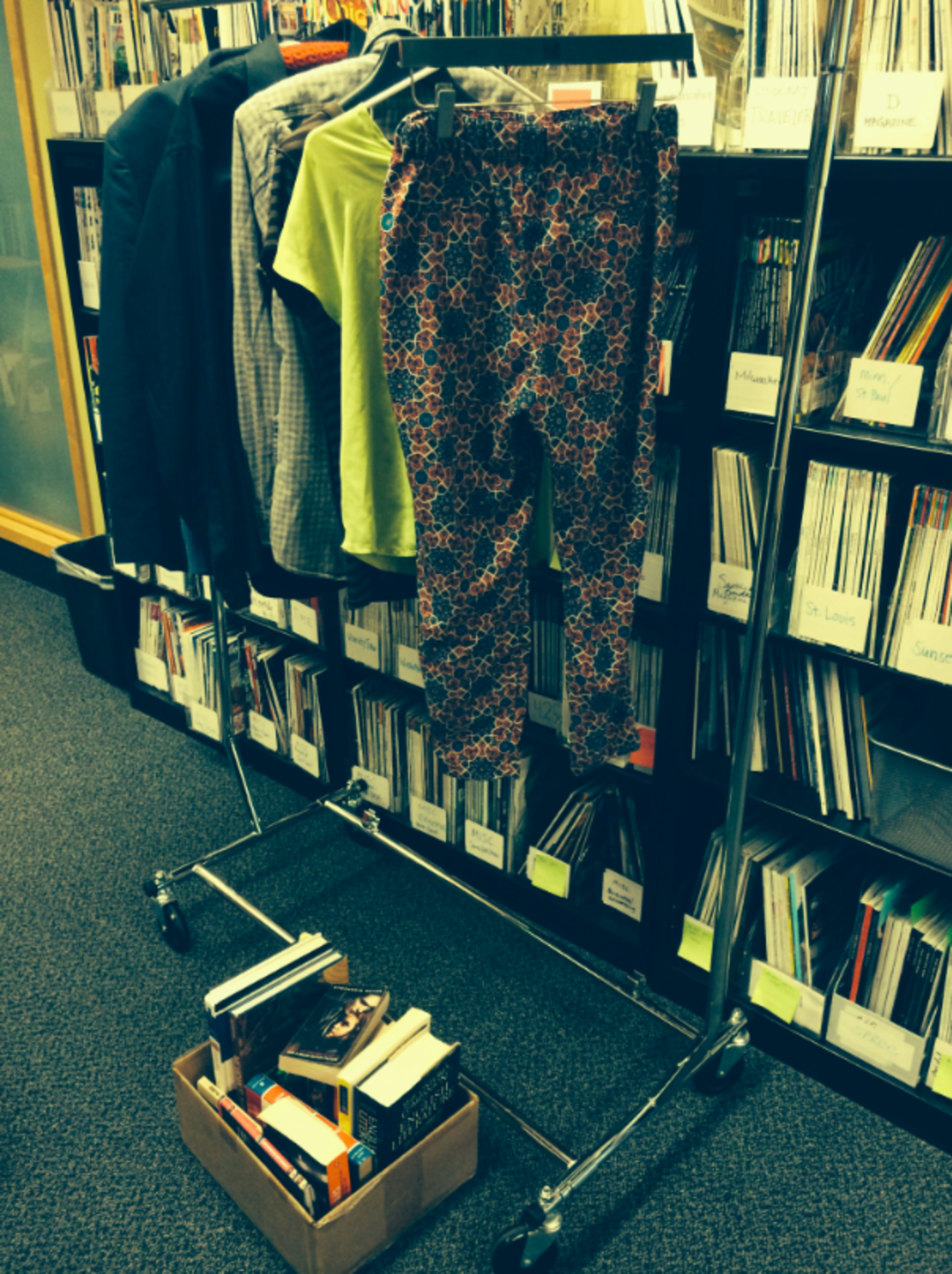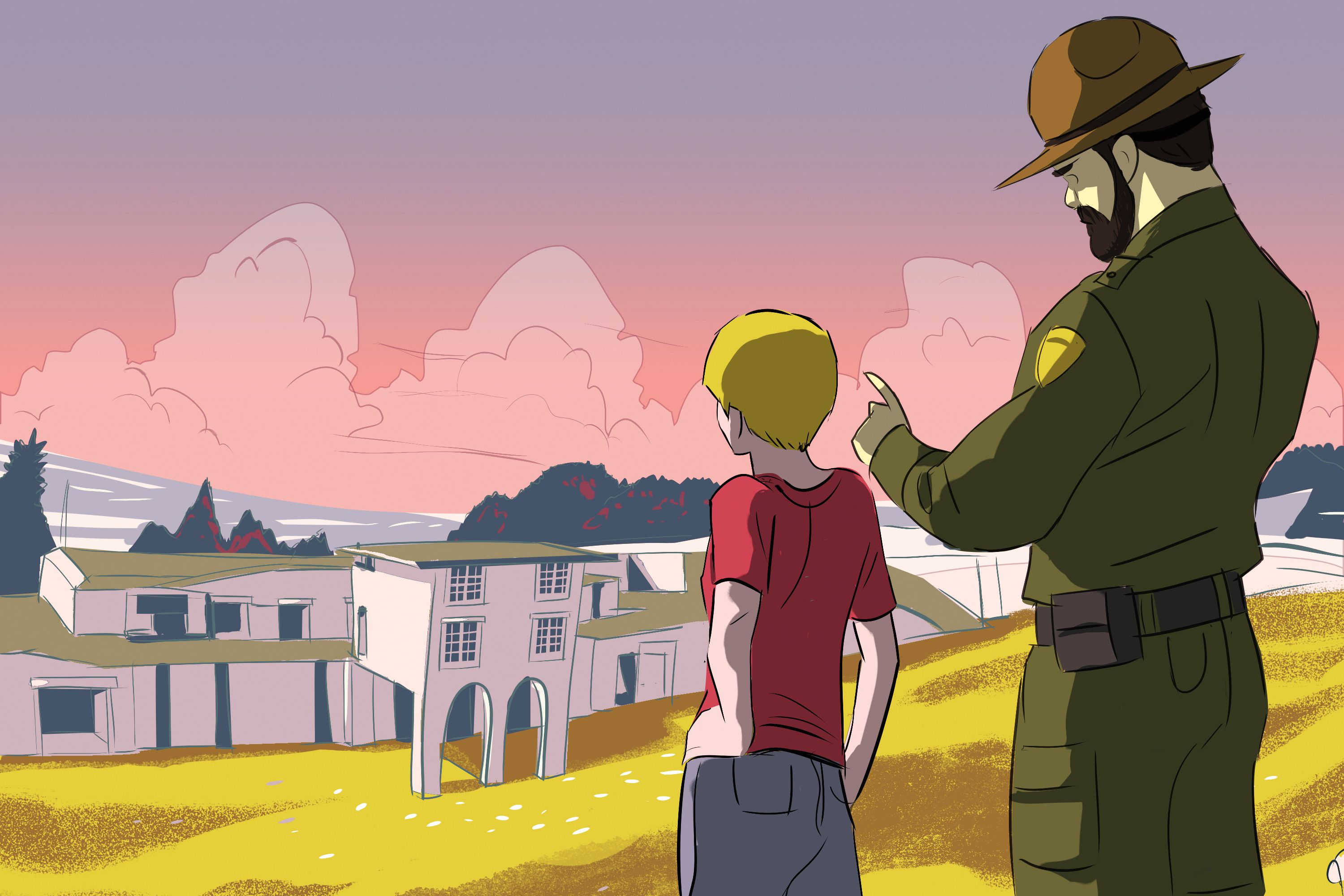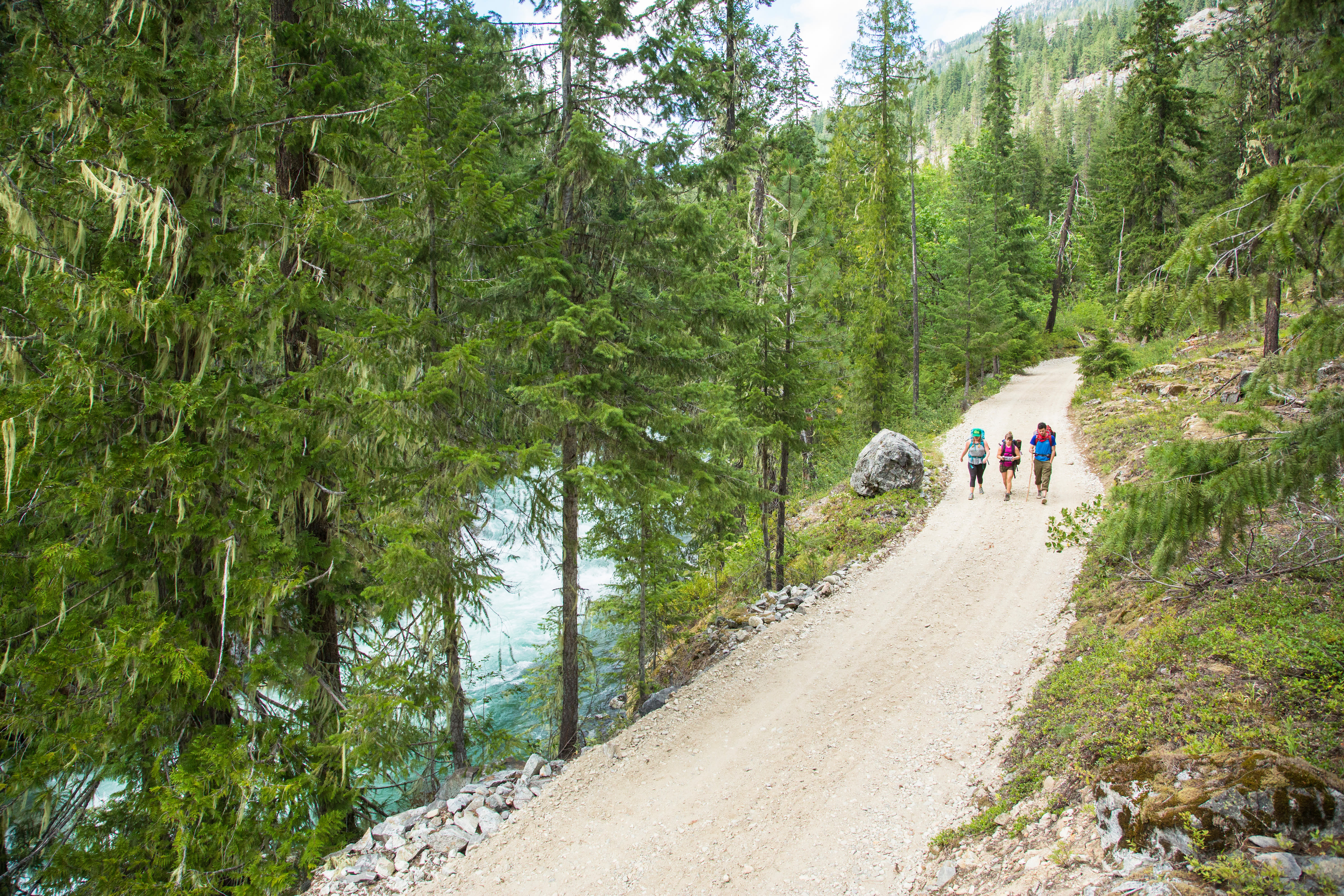Pedestrian Chronicles: Park(ing) Day Tomorrow. Stop by PubliCola's SwaPark

I'm all legal for tomorrow's Park(ing) Day
I've written about the city's parklet program a lot, including dedicating an entire Fizz last June to the Life & Death of the Great Micropark at 20th & Union; there was also this recent Fizz item about night life entrepreneur David Meinert's clever micropark plan to exploit the program so he could extend his private outdoor seating biz—a concept that raised questions about what public space should and shouldn't be used for.
And that's exactly what tomorrow's Park(ing) Day is about. (Meinert's plan—having the sidewalk lope out into the street—was provocative and innovative.)
As I explained to a colleague here at the magazine who asked what I was doing tomorrow when they saw me hauling No Parking signs and plastic orange barriers around in preparation for my pop-up park: The idea behind commandeering public right of way that is typically reserved for idle cars is to make the public think with 3-D glasses about public space—and ask questions about how city planners prioritize public space. Tomorrow's explosion of temporary parklets—50 located all over town for just one day—is intended to force people to think about how things would be if City Hall didn't plan everything around cars.
Sure, people can still drive around the city tomorrow, but for six hours from 9 AM to 3 PM, they cannot assume that curb sides everywhere are reserved exclusively for them.
The idea behind commandeering public right of way in spaces that are typically reserved for idle cars is to make the public ask questions about how city planners prioritize public space.
Turning mini-parking lots into mini-ped zones, recasts the city infrastructure with pedestrians as the top priority. It's a planning concept (the city has now approved 13 spaces as permanent parklets, with two up and running) that's good for adjacent businesses. A parking spot in front of a business locks an empty car in front of that store for one or two hours—with one or two people who may or not be parking there for the store. A park in front of a business, on the other hand, creates activity that can generate additional foot traffic.
I'm calling my micropark the SwaPark. Bring something—a shirt you no longer want, a paperback novel—and exchange that for something that someone else left. I'll also be asking people to fill out and initial an index card with a story about the item they drop off. Meanwhile, the person who takes that item (after trading in their own item) will initial the card as well. By cross-referencing at the end of the day, I'll have a story exchange as well.
For example, I'll know that the person who dropped off the jacket they wore to their first job interview walked away with the vintage copy of the New Yorker that published another swapper's first letter to the editor. And the person who left the New Yorker got the TLC CD that T-Boz signed.
Stop by University St. between Alaska Way and Western tomorrow between 9 AM and 3 PM and, if you trade for them, get the story behind those amazing pants.





